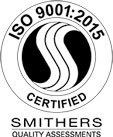Plastic: it’s all around us. But as you probably already know, not all plastic is the same. Choosing the right plastic for your commercial packaging needs can make or break the success of your product, the sustainability of your business, and even the health of your consumers.
There are two main materials used in plastic packaging: PET plastic and PVC plastic. While their final byproducts look relatively similar, and both plastics have three-letter “P” abbreviations, PVC and PET are quite different when you take a closer look. Read on to get the facts about the pros and cons of each material!
PVC Plastic
PVC stands for “polyvinyl chloride.” Polyvinyl chloride plastic is made through a process called suspension polymerization, resulting in a final product that’s hard and rigid. It’s most commonly used to produce pipes, cables, signs, roofing materials, and even faux-leather clothing, along with certain types of clamshell packaging.
The Pros of PVC
- PVC plastic can withstand harsh impacts and extreme temperatures, so it’s ideal for use outdoors or in rapidly changing environments.
- PVC is an extremely common thermoplastic resin, making it cheap to produce on both small and large scales.
The Cons of PVC
- Since it’s made from polyvinyl and emits hydrogen chloride, PVC is not appropriate for medication or beauty product packaging. Additionally, hydrogen chloride has been known to react with food and beverages, so this type of packaging can pose health hazards when used for products that are made to be consumed. .
- PVC can be difficult to recycle and breaks down more slowly than PET plastic.
PET Plastic
PET stands for “polyethylene terephthalate.” PET is made from ethylene glycol and terephthalic acid, which combine and form a polymer chain. Then, the resulting “spaghetti” strands of PET are extruded, cooled, and cut into pellets.
There are two more steps before PET packaging is created: first, the pellets are molded into the appropriate shape, then, they’re dried for strengthening purposes. Because PET is lightweight yet strong and easy to mold, it’s become one of the top materials used for thermoformed packaging designs. If you need thermoformed trays for any application, PET is an excellent material for the job.
The Pros of PET
- PET is versatile. It can be used for almost anything, from packaging food items to keeping electronics safe and dry.
- PET resists tampering and is not absorbed by what it contains, making it suitable for food and beverage packaging.
- PET is more environmentally friendly. It is 100% recyclable and has a quicker cycle time compared to other industry plastics. In fact, PET is one of the most recycled plastics globally.
- PET has a higher thermal conductivity, making it more resistant to heat.
The Cons of PET
- PET can be less durable when it comes to impact, making it less ideal for use in cars, traffic barriers, and other crucial safety structures.
- PET may not be suitable for some specialized applications.
Start Your Project Today!
As you can see, PET has many advantages over PVC, yet there are still certain situations where PVC is preferable. It all depends on your individual use case and the type of solution you’re looking for.
Are you planning to use PET or PVC? To get started with your plastic packaging project, contact Munot Plastics today. We’re always here to answer any and all of your questions!


